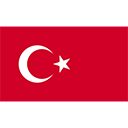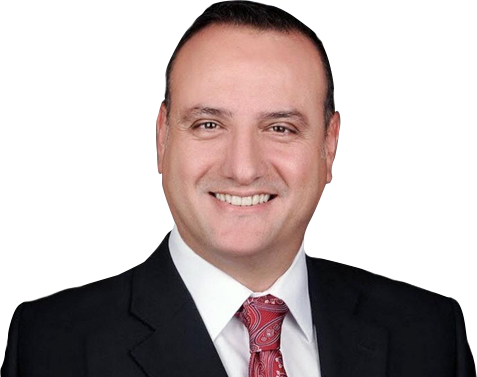
What is Sleeve Gastrectomy?
Sleeve Gastrectomy is an operation where the stomach is narrowed longitudinally. This narrowing procedure may be referred with many different names.
|
|
Gastric Tubing |
|
|
|
|
|
|
|
|
|
Names used instead of Sleeve Gastrectomy:
- Tube Stomach
- Gastric Tubing
- Gastric Sleeve
- Vertical Sleeve Gastrectomy
- Big Curvature Gastrectomy
- Parietal Gastrectomy
- Gastric Reduction
- Vertical gastroplasty
Weight loss is provided through two methods in surgical treatment of obesity. First method aims to reduce quantity of meals eaten. Gastric volume is reduced in these type of surgeries. The second method aims to reduce absorption of foods eaten. These kind of operations close small intestine for food passage with different lengths. Sleeve Gastrectomy is a procedure which is performed to reduce your gastric volume only. The stomach is cut longitudinally and some part is removed. Volume of remaining stomach becomes smaller. The stomach shape is like a banana. Since it looks like a tube, it is also called as gastric tube.
- In Sleeve Gastrectomy procedure, the part of the stomach which stretches most and enlarges the gastric volume is removed. The remaining stomach part is not stretched much. Therefore, over eating is prevented.
- Gastric tubing also increases stomach resistance against foods. It does not allow passage of foods which has big volume. Your bites in your meals become smaller.
- Gastric tubing provides rapid discharge of foods from the stomach. Foods which do not stay much in the stomach leave before they enlarge gastric volume.
- Passage of foods into the small intestine is faster in gastric tubing. This rapid passage stimulates small intestine movements. Although sleeve gastrectomy does not make any change on small intestines, over absorption of calories taken with foods is prevented by this way.
Sleeve gastrectomy operation has been applied in different forms for many years. However, it was being applied by longitudinal closure of stomach. Then, closed part of the stomach was started to be removed. Dr. Jamieson (Long Vertical Gastroplasty, Obesity Surgery 1993) from Australia in 1993 and Dr. Johnston (Magenstrasse and Mill operation- Obesity Surgery 2003 ) from England in 1996 were first appliers of this technique. Then, Dr. gagner from USA has published removal of some part of the stomach first in 2001. Dr. Gagner suggested sleeve gastrectomy to be performed on super obse patients who can not have a standard bypass or biliopancreatic dğiversion-duedonal switch operation as first stage treatment. After then, gastric tube or sleeve gastrectomy has been preferred on more patients. Today, it is applied as alternative to gastric band for patients with lower BMI whom gastric band is considered.
On Which Patients may Sleeve Gastrectomy be Applied?
Sleeve gastrectomy may be applied for all patients who need treatment because of obesity. Although it has been started as first stage treatment for super obese patients during first years, it is commonly and successfully applied for patients with lower body weights today.
- First stage treatment is applied as sleeve gastrectomy operation because the operation period is shorter for super obese patients with BMI (Body Mass Index) over 50 kg/m2.
- Sleeve gastrectomy is applied for patients who hesitate from any gastric bypass operation due to long term problems.
- Sleeve gastrectomy is applied as an alternative for patients whom gastric band is planned.
- Gastric bands is removed in patients who had Gastric Band procedure but have experienced problems and sleeve gastrectomy operation is applied.
- Sleeve gastrectomy operation is applied for patients who hesitate from problems because of a foreign body such as gastric band or do not want to come to the doctor for gastric band adjustments.
- Sleeve gastrectomy is applied because it is an operation which may be converted into another long term effective surgery.
What are Risks of Sleeve Gastrectomy?
A part of the stomach is removed in sleeve gastrectomy operation. A suture line is left on remaining and reduced stomach. Small leaks may appear from this suture line in some cases. This risk is lower than 1%. Most of leaks heal without noticing them. Small abscesses may develop due to these leaks in some cases. In these cases, the problem is resolved by external discharge of the abscess and appropriate antibiotic treatment. Another operation may be necessary in rare cases.
Causes of these leaks that may occur in the stomach may depend to surgical technique and patient-associated problems.
Today, different methods have been developed for safety of suture line and is applied surgically. These methods are operated differently by each surgeon.
Causes associated with the patient generally appears because of the load by obesity. Obesity may cause immune system weakening. This may cause longer and difficult recovery of the trauma created surgically.
We scarcely observe any of these problems in sleeve gastrectomy operation. Our preoperative and postoperative care conditions are sufficient to deal with these problems easily and these carry surgery reliability to the top.
|
|
Sleeve Gastrectomy Animation |
|
|
|
|
|
|
|
|
|
How is Sleeve Gastrectomy Applied?
Today, sleeve gastrectomy operation is applied by closed method called laparoscopic like all obesity and metabolic surgery methods. All operation is performed via holes smaller than one centimeter opened in the abdomen laparoscopically. Specific tools are used for this. Cutting desired part of the stomach and suture procedure are performed with specific devices which were designed specifically and are used for your operation only. These devices cut your gastric wall and stick it with special sutures. We apply a second suture layer on this suture line manually. This procedure increases reliability of the operation more. You start to drink water during the same day after the operation. Bowel movements of many patients become normal and liquid foods without grain are started at the next day.
How Does Sleeve Gasterctomy Effect?
|
|
Sleeve Gastrectomy |
|
|
|
|
|
|
|
|
|
- Volume of your stomach which was reduced in shape of a tube or banana decreases with sleeve gastrectomy. Your meal portions reduce. For example, while you feel full with a bowl of soup, 5 to 6 meatballs with rice or pasta and salad before the operation, you get full with 4 spoons of soup, one meatball after the surgery.
- Hunger hormone secreted from removed part of your stomach decreases by 70 to 80% after sleeve gastrectomy. Name of this hormone is ghrelin. You feel hunger less between meals because of reduction of hunger hormone (ghrelin). Your fullness feeling lasts longer.
- Because your stomach is made like a tube with sleeve gastrectomy, your stomach discharges rapidly. Rapid passage of foods eaten from the stomach also increases your bowel movements. Although sleeve gastrectomy does not cause any change in your intestines, some excessive calories of foods are discharged without absorption due to increase of bowel movements partially.
- Most of the patients express that they do not have their previous desire to different foods that they used to like before. Moreover, they do not want to eat some foods because its taste becomes worse. This kind of foods include coffee, coke, some cookies and bakery products.
- The part of stomach close to the exit is called Antrum. After sleeve gastrectomy (gastric tubing), antrum pressure increases. This pressure increase causes antrum stretching and suppressing feeling of hunger. (Bergman JF. Correlation between echographic gastric emptying and appetite: influence of psyllium. Gut, 1992 Aug;33(8):1042-3)
- Because no foreign body is left inside in sleeve gastrectomy, no problem due to this is experienced.
- No adjustment like gastric band is required. It does not change anatomy of digestive system.
- The only long term side effect is partial weight gain. It may be converted into another effective operation. Therefore, it is the most suggested operation.
 English
English Turkish
Turkish

